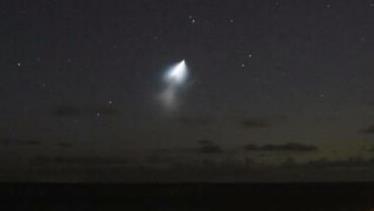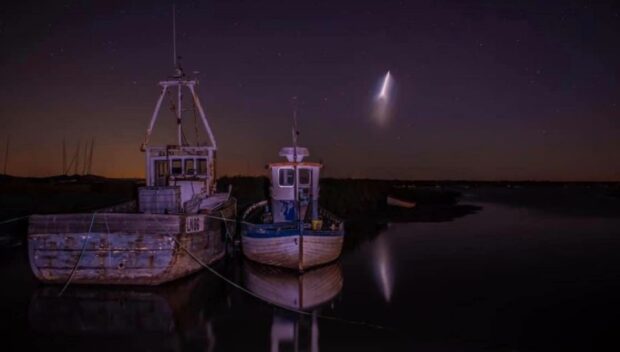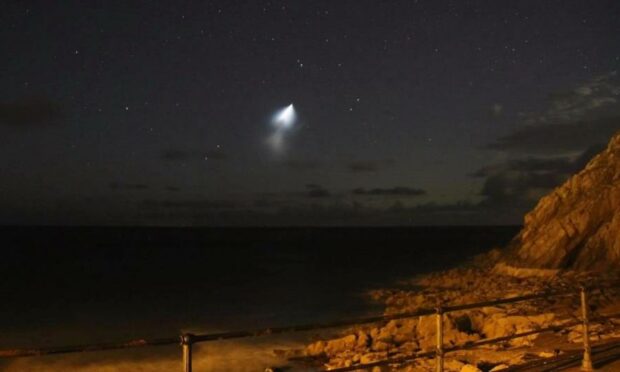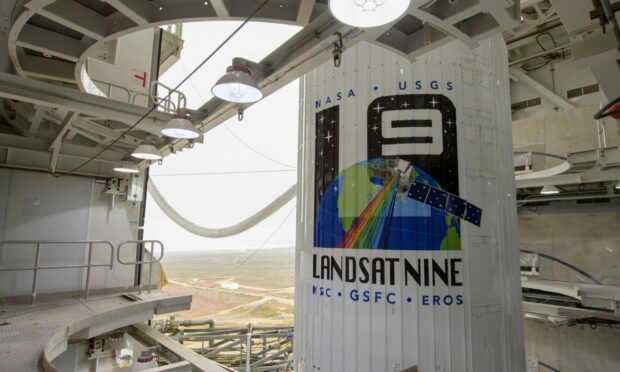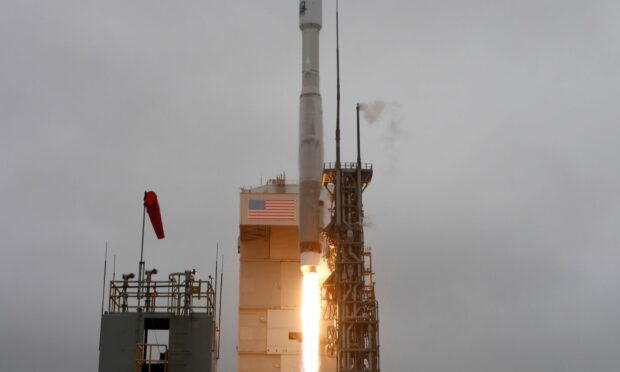A mysterious light illuminated skies above Tayside and Fife on Monday night – leading to speculation that a UFO may have visited the area.
Dozens of people took to social media to report seeing the bright white light across the region, and elsewhere in the UK.
Alyth man Steve Simpson saw the light above his house just before midnight.
He told The Courier: “It passed over us just after 11.30pm. It was slow moving, heading north and was like a torch or searchlight shining down.
“If you believed in UFOs you’d be forgiven for thinking it was one.”
Posting on Facebook, rail worker George Hutchison wrote: “I was just driving the train from Edinburgh to Dundee and saw this while going round the Fife coast near Kirkcaldy.
“I wondered what the hell it was and wondered if anyone else would have seen it.
“It was a very strange sight.”
The light was from the Landsat 9 satellite, which launched from California just after 11am local time yesterday, 6pm GMT.
So to confirm, this is either a satellite burning up as it deorbits and enters our atmosphere OR a fuesalage from a rocket burning up as it re-enters the atmosphere. Whatever it was, absolutely incredible! Seen in Dundee. @BBCNews @STVNews @BBCScotland pic.twitter.com/KfAAnqg80A
— Adam 🏴🎸📷 (@Th0ttySc0tty) September 27, 2021
It is the latest in a series of Landsat satellites to record the surface of Earth.
The satellite is a joint endeavour by Nasa and the United States Geological Survey (USGS).
It blasted off from Space Launch Complex 3 at Vandenberg Space Force Base in California aboard a United Launch Alliance (ULA) Atlas V rocket.
People across the world were able to watch the launch live on television.
Speaking ahead of the launch, Scott Messer, ULA programme manager, Nasa Launch Services, said: “The United Launch Alliance team is very proud to deliver Landsat 9 to its mission orbit, and we look forward to continuing to empower crucial observation and research of this beautiful planet.
” We’ve successfully launched 144 missions as United Launch Alliance, and we look forward to continuing that 100% mission success with our 145th launch on Monday.”
The rocket was originally scheduled to blast off on September 16, but it was pushed back following a delay in a crucial liquid nitrogen delivery.
That was related to a worldwide shortage of liquid oxygen caused by the Covid-19 pandemic.
Liquid oxygen is also a crucial component of rocket launches.
The Landsat 9 mission, which cost around $750 million, aims to continue the programme’s role of monitoring and managing land resources like crops, water and forests.
Landsat satellites have been an invaluable resource for scientists since the first satellite launched in 1972, providing nearly 50 years’ worth of uninterrupted data to scientists on the ground.
The Landsat 9 satellite will replace the Landsat 7 satellite, which has been in orbit since 1999, and will work in tandem with Landsat 8, which launched in 2013.
The Landsat 8/9 duo will image Earth every eight days.
